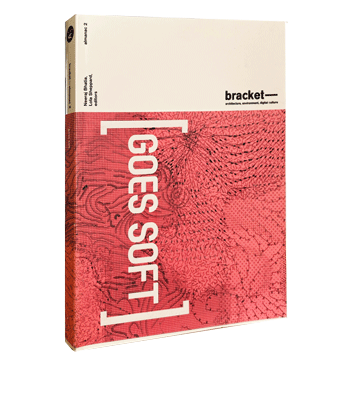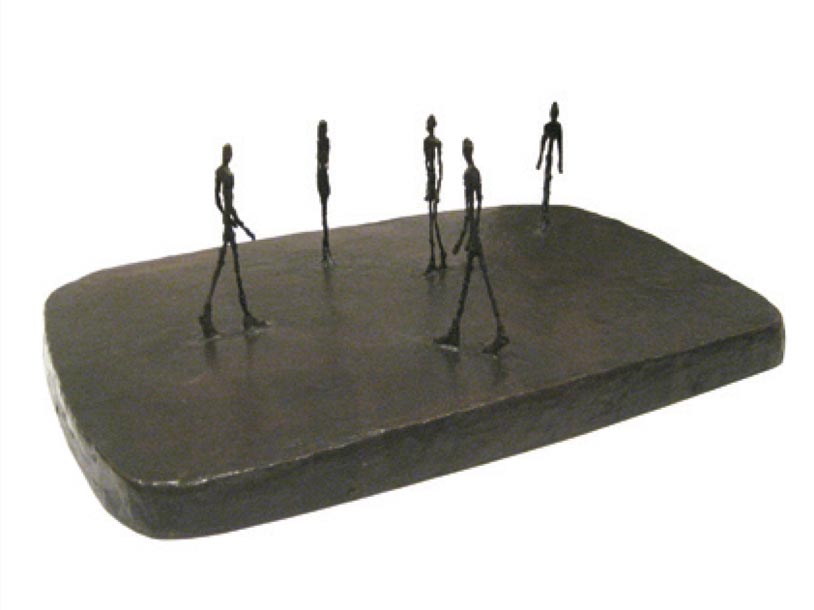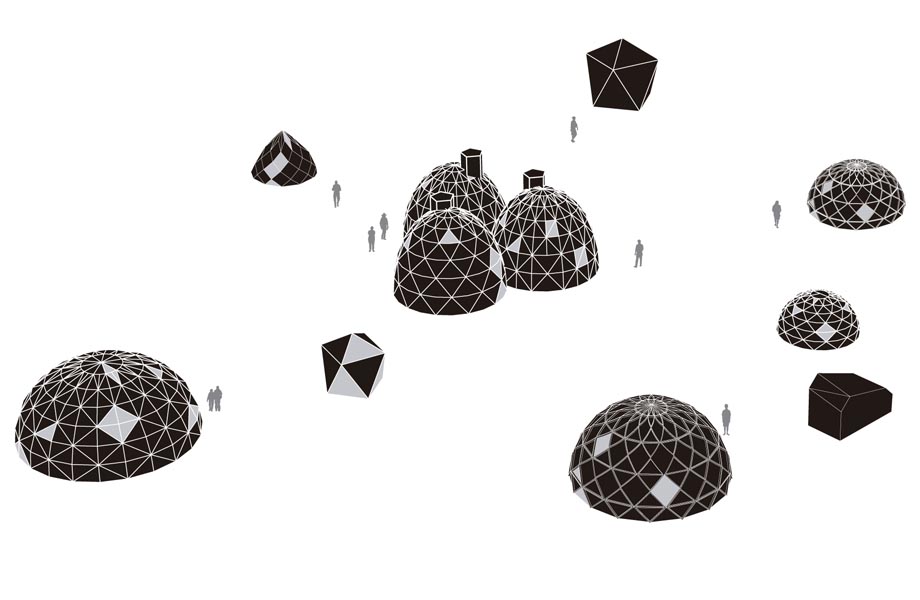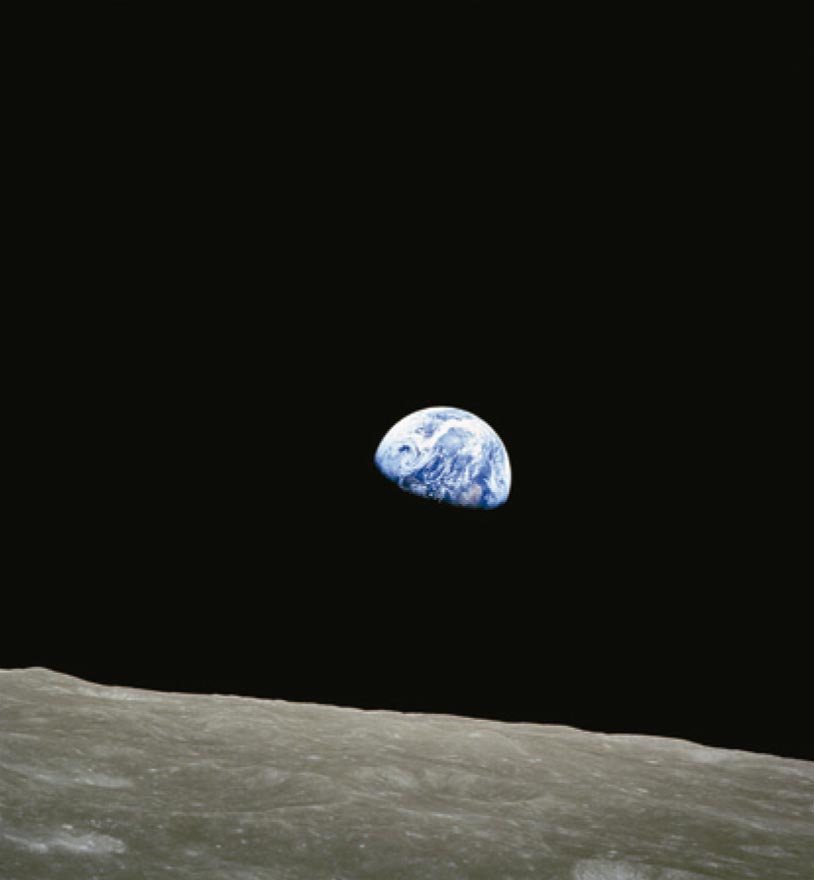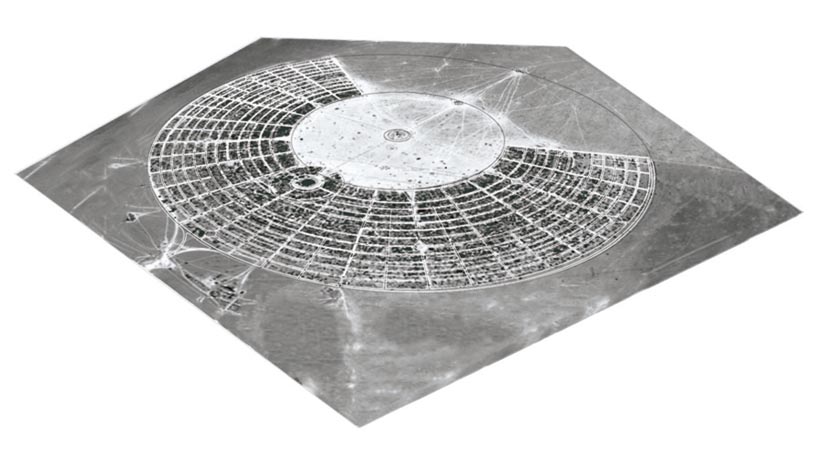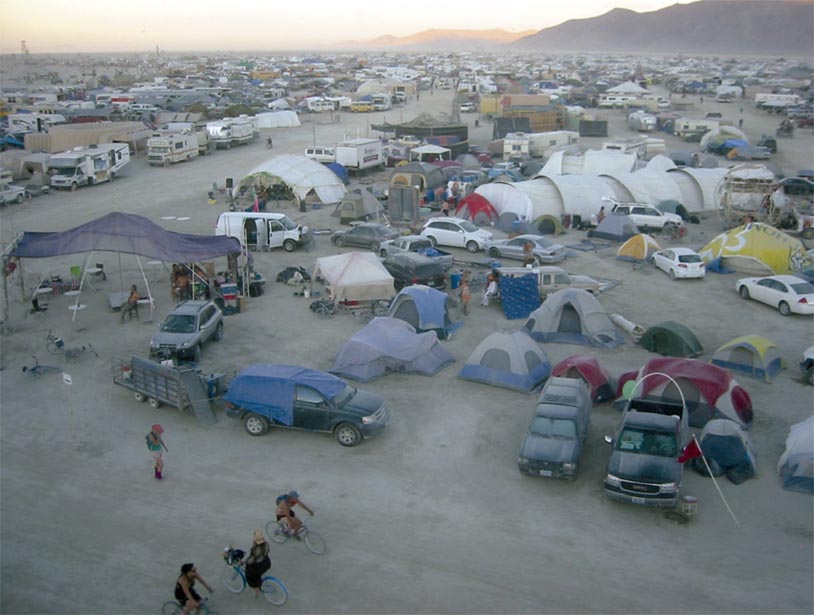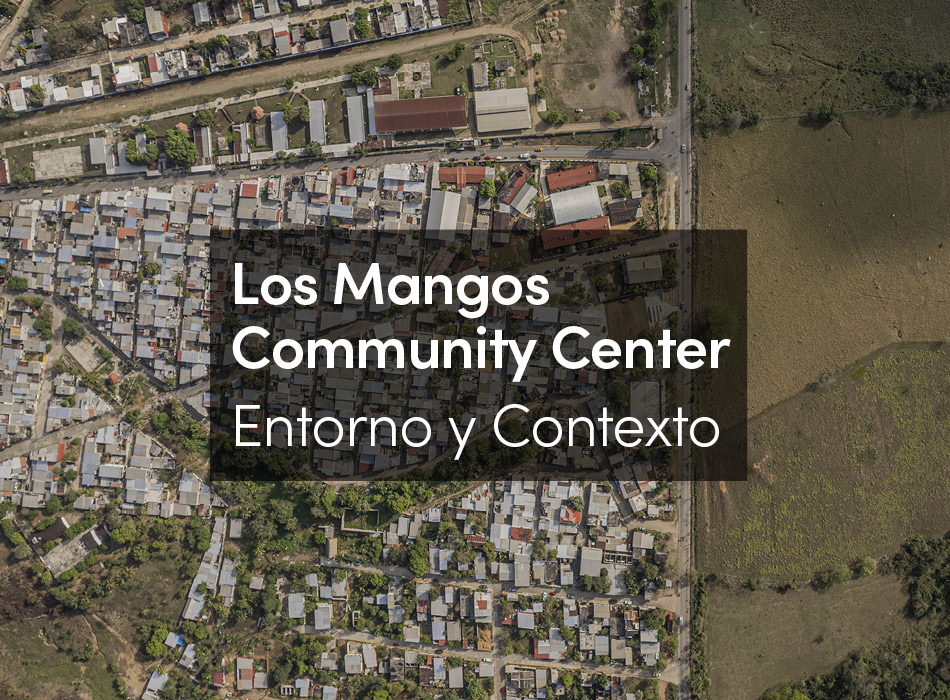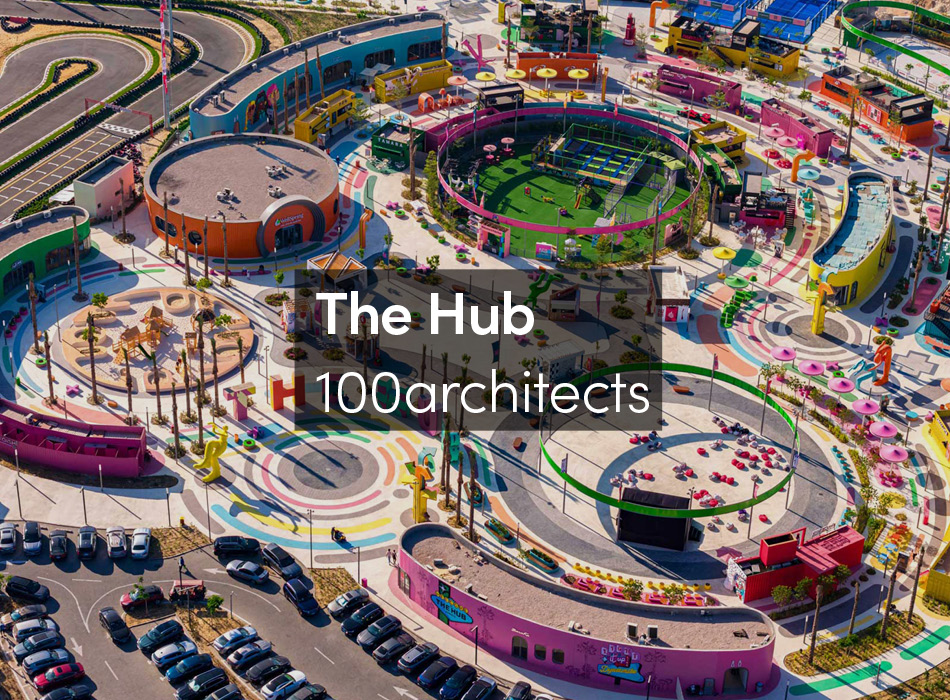Throughout the history of architecture, the role of the Architect has been to determine lines that ordered the world. In the past two centuries, however, as cities have rapidly expanded into vast urban territories that are organized through the negotiation of politics, economics, ecosystems, and cultural values, the ability to determine such lines has become progressively more complex and suspect.
Such suspicion stems in part from the fact that architecture traditionally deals with determinacy, permanence and form—characteristics that are increasingly difficult to reconcile with the rapidly transforming metropolis. On the one hand, this has sparked a disciplinary identity crisis characterized by a yearning for architecture’s opposite—flexibility, dynamism, immateriality and indeterminacy, in response to such emergent variegations. Moreover, the transformative nature of these systems acts as a fundamental disturbance to architecture, which traditionally thrives in stasis. If resilience is defined as the ability to return to an original state after a disturbance, this is typically achieved in architecture by neutralizing difference or accounting for extremes. Architecture could, however, gain renewed agency by adopting a soft resilience into its very structure—evolving and transforming with the contemporary metropolis.
To understand how architecture and urbanism can operate with a soft resilience, it is useful to begin by framing architecture as oscillating between ecological poles. The definition of ecology is both an organism’s relationship to other organisms—the ‘human ecology’ (i.e. our political, economic and social spheres); as well as an organism’s relationship to its environment—the ‘natural ecology’ (including the design of landscape, infrastructures, urban form, as well as the impact of environmental conditions such as geology, weather and ecosystems, to name a few). Architecture has always been a negotiation between the ‘human’ and ‘natural’ spheres, collecting resources and responding (often hermetically) to the external environment, while also requiring political will, social approval and economic support to reify. But such a negotiation has usually privileged one sphere over another, rather than seek a symbiosis between these spheres to create a true ecological project that operates through feedback and resilience.
i. Human Ecology—The Dialectic of Pluralism
As a decisive factor on how we approach the issue of economics, social integration, the environment and their associated spatial formats, the political sphere acts as a critical hinge in the reconciliation of the ecological project. Two patterns that have become realities over the past three decades include the increasing urbanization of the globe [1] and its simultaneously expanded interconnectivity. [2] Although these patterns are no longer shocking, they have brought to the surface the question of multiculturalism, diversity, and pluralism in the globalized city. While pluralism is typically understood as meaning diverse, different or divergent, it is in fact much more complex and political in nature. Political theorist Hannah Arendt has one of the most refined definitions of pluralism, calling it the dialectic of our ‘distinct-equality’ and positioning it at the core of the public sphere:
Human plurality, the basic condition of both action and speech, has the twofold character of equality and distinction. If men were not equal, they could neither understand each other and those who came before them nor plan for the future and foresee the needs of those who will come after them. If men were not distinct, each human being distinguished from any other who is, was, or will every be, they would need neither speech nor action to make themselves understood. [3]
City Square, Giacometti (1948)—A collective platform of distinct individuals
Arendt’s characterization of this complex and seemingly contradictory public sphere is perhaps best summarized through her analogy of a group of people sitting around a table. For Arendt, the table is the common world—it simultaneously connects and bonds those around it while preventing them from falling over each other and assimilating belief systems. The disappearance of the table would leave strangers in a space that lacked a common bond—this would be the fall of the public realm and its associated reality and stability. [4]

Ville Spatiale, Yona Friedman (1959–)—A collective framework containing individual, flexible and mobile pods. (Drawing by Alicia Hergenroeder)
In essence, the metaphor of Arendt’s pluralism is embodied within Giacometti’s City Square, wherein distinct individuals are tied together on a common platform. Extrapolating from Arendt, the political project of the city is to reconcile the collective (equality) and individual (distinction). Surely, Arendt is not alone in this quest—–think about the tension and similarities on various philosophical and design debates over the past two centuries: objective vs. subjective (Enlightenment vs. Romanticism) [5]; collective vs. individual (CIAM) [6]; exterior vs. interior (Team X’s Doorstep Analogy) [7]; control vs. choice (Archigram) [8]; frame vs. pod (megastructure) [9]; determinacy vs. indeterminacy (hard vs. soft systems) [10]; etc. None of these debates, however, was able to mediate such a dialectic that is at the core of a politically empowered metropolis. Increasingly comprised of a grouping of various constituencies, a scan through the current metropolis provokes the ultimate question of where the common object of collectivity presently exists? The issue of diversity [11] is even more pronounced today, with more than half the population of some cities consisting of visible ‘minorities’. This growing situation prompts a design interrogation of how one can provide unity in diversity, reconcile the individual and collective, and accommodate distinction and equality. It is a political ecology rooted in pluralism that can produce a collective agency, capable of restructuring our economic and socio-cultural territory and its relationship to the natural environment.
Form and the Emergence of Soft
An attempt to reconcile such issues reached a fatalistic apogee in the typology of the megastructure. Le Corbusier, who repeatedly stressed the importance of the individual and collective in the C.I.A.M Athens Charter, planted the seed for the mega- structure in his Plan Obus (1933) in Algiers. In his project, a continuous linear form merged architecture, infrastructure and topography, while subdividing into multiple dwelling units. Within such a framework, Corbusier left the dwellings “open” to be designed by their individual occupants and revealed the diversity that he envisioned through his sketches. Thirty years later, in the 1960s, the megastructure had fully bloomed and its basic characteristics were exemplified in Yona Friedman’s Ville Spatiale (1958). The Ville Spatiale was organized by a universal frame of infrastructure descended from Enlightenment values—it was permanent, deterministic, and provided order to the collective. Within this frame, a series of indeterminate, mobile and flexible pods were to empower the individual. The megastructure oscillated between control and choice and was eventually critiqued for being a mere illusion of choice dis- guised behind controlled variations. Emerging as a reaction to the heavily deterministic and hard projects of C.I.A.M and the New Monumentality (not to mention WWII), the megastructure was attempting to shed the ‘hard’ and such criticism resonated with its primary proponents. For instance, Archigram’s acknowledgement of this contradiction shifted their own dis- course in favor of “choice”, stating in the editorial of Issue 7 an attempt to go “beyond architecture” (the title of the issue) and forecasting that Issue 8 might not have any buildings at all. [12]
The editorial of Issue 8, “Open Ends”, stated in regards to design: “It is less a question of total idea and total consistency,”[13] revealing the abandonment of the hegemonic framework and a refocusing of efforts on the individualistic counterculture projects of the soft pod. Soft material constructions, such as inflatables, were viewed as a democratic alternative, allowing for continuous change and portability. [14] Soft was deemed to provide differentiation to an increasingly heterogeneous society comprised of individual subjectivities through characteristics such as flexibility, responsiveness, and adaptability, [15] and no longer required a collective frame.
Drop City (1965-73)—Urbanism created by individual pods with little collective framework. (Drawing by Alicia Hergenroeder)
With such a focus on the soft unit, few examples of urban projects stemming from the pod exist from this era. Archigram’s Instant City (1968-72) is often cited as an emblematic soft urban project. In Instant City, a temporary, nomadic, event metropolis (which also happens to be an airship—the largest soft pod of all) plugs into an existing city, utilizing it as hardware. The dependence on the existing city’s framework revealed the difficulty in providing overall coherence, which is required of infrastructural integration at the scale of urbanism. Archigram intelligently avoids this issue by solely focusing on the software as a parasite to allow for the purity of the pod(s). Drop City (1965-1973) serves as another example of a settlement constructed solely of soft pods. Formed as an artist community established from the bottom-up in Southern Colorado, Drop City epitomized the counter-culture hippie movement of rural communal living. It was comprised of a series of Fuller-inspired geodesic domes assembled by residents from found materials. There was no ‘city plan’ but rather a collection of pods that alluded to the impermanence of a camp. The collective process of building held the socio-political ecology of the community together, as described by a resident:
The hardest time in a commune, particularly Drop City, is the time after the building gets done. While everyone is working together on actual construction the energy is centered, there is fantastic high spirit, everyone knows what he is doing all the time. But after the building is done comes a time of dissolution.
There’s no focus for the group energy…” [16]
The dissolution felt by residents was the lack of collective goal once a project was completed, as the focus and origin of the city was built from the scale of the individual with little collective framework. As Drop City gained attention and grew in size (to approximately thirty residents), internal conflicts between residents lead to its very demise. To characterize Drop City in Arendt’s terms would suggest that the city was a grouping of individuals existing within a tenuous collective framework, ultimately inciting the breakdown of its public sphere. While the abandonment of the universal collective frame seemed like an innocent move for Archigram and other megastructuralists, its disappearance eroded the frail dialectic of pluralism as well as the city as a collective political form.
A crucial lesson from the megastructure and soft-pod projects is the necessity for feedback between the collective and individual to allow each to influence and transform the system. [17]
This is critical because it allows disturbance to be absorbed by the units, which can reconfigure the framework, or by the frame itself, forecasting an alteration to the organization of the units. Soft resilience can therefore be achieved through a distributed, differentiated and networked system that can respond at a multiplicity of scales. In this sense, the system is simultaneously ‘bottom-up’ and ‘top-down’. Perhaps even more important than feedback is the need for a communal goal, which serves as the impetus for the collective. While this goal may evolve in time, it continually links the individual and collective and makes the city more than a mere grouping of buildings.
ii. The Natural Ecology—Soft Infrastructures
The photograph Earthrise [18] taken by the Apollo space shuttle framed the globe as a unified, yet differentiated object and provided an image for a new global collective in a moment of increasing socio-political fragmentation. In the current era of environmental crisis, the natural environment is perhaps the only issue that effects all of humanity equally and requires the formation of a new collective to be addressed. This emphasis on the collective natural environment repositions the role of infrastructure as the foundational spatial format, as it allows for the interconnection between the human and environmental spheres—constantly negotiating the boundary between landscape, urbanism and architecture. As the notion of the ‘public’ continues to parcel into various niche groups, infrastructure, as one of the few spatial categories that is funded and utilized by the entire public, remains the last vestige of publicness in the contemporary metropolis.
Earthrise (December 24, 1968)—The first image of the globe depicted a new collective as well as the feedback between various scales and systems. (Image NASA/Apollo 8)
Equally important to the framing of a collective, Earthrise depicted the globe as a vast and complex series of dynamic systems and made it apparent that the globe’s stability was rooted in such dynamism. These systems could be characterized as ‘soft’ in their complex negotiation through feedback of the XS and XL scales. The renewed soft project stemming from such understanding has evolved beyond materiality to a system of organization. Infrastructure is implicated here once again as it oscillates between the local and global as well as the natural and artificial. Typically emerging from the top- down, infrastructure traditionally operates in the framework of resistance instead of resilience. In essence, infrastructure has been deployed as a machine over the larger landscape, which thrives from its subcomponents conforming to its logic. While sub-networks of infrastructural systems offer a form of contingency, the essential conception and deployment has been to mitigate and eliminate disturbance. Although infrastructure supports almost all aspects of our daily lives—water, waste, mobility, energy, food, etc.—it has rarely been thought of holistically or symbiotically. The critical project that this new collective must undertake is a paradigmatic shift in the role and deployment of infrastructure, such that it operates symbiotically between the human and natural spheres as a soft system that provides resilience through the continual negotiation of ‘top down’ and ‘bottom up’ organizations within the ecological poles.
Soft Fields and Frameworks
While the soft pods of the 1960s and 70s typically operated at the limits of material properties and were therefore scaled to the individual, there are some examples that provide cues on how infrastructure could be deployed or conceived with systemic symbiosis or offer resilience. A project that differentiates itself from the typical inflatable bubble is Michael Webb’s Magic Carpet and Brunhilda’s Magic Ring of Fire (1968). In Webb’s speculative project, a field of air tubes function as a reverse hovercraft, which can adapt to the transforming positions of the body. What makes Webb’s project unique from earlier experiments such as Cushicle (1966) or Suitaloon (1967) was the abandonment of a singular pod envelope for a field condition of air jets. Blowing air at varying pressures, the tubes are in constant renegotiation to support the body in different positions. As a distributed, non-hierarchical network of individual components, the ‘enclosure’ is able to actively respond to its user’s local circumstances while also having overall continuity from the gridded matrix. While it is conceivable that a framework would need to exist to hold the field in place and host the mechanical equipment, Webb completely omits this information from the drawings. Representing the tubes as emerging from the landscape, and suppressing the notion of the framework, Webb’s project examines the limits of dematerializing the frame while still providing collective unity to the field. His ‘mini-structure’ depicts how a field that privileges its unit and their local relationships can, on the one hand, reconcile the individual and collective, and on the other, absorb and adapt to disturbance.
This frail line between the individual and collective also finds a form of reconciliation at the scale of urbanism in Black Rock City (BRC). Conceived as a temporary settlement, BRC is organized on the ancient lakebed in the Black Rock Desert for the eight-day annual event, Burning Man. With modest beginnings of twenty friends in 1986, the event has grown to host over fifty thousand participants. The current urban plan, which formalized a spontaneous organization, was put into place for safety, municipal, and social reasons. The planner of BRC, Rod Garrett, stated that before the plan was instituted:
We got to a point where I saw people becoming irrationally angry with each other and with the city… It occurred to me that this might be an effect of overpopulation, and that we’d hit some tipping point where people were no longer comfortable. [19]
Garrett had noticed that the collective was dissolving as the populace overtook the city’s framework and lost its coherence and organization. Yet, the notion of a ‘top- down’ planning regime was antithetical to the concept of the festival, which revolved around the symbolic burning of “the man.” Within such a seeming paradox, Garrett explored the notion of a soft framework to organize the public and harness collectivity without suppressing individual expression or identity. Garrett’s plan is based on a radial grid that is etched into the desert landscape. These concentric rings are centered on the “burning man,” a legible orientation device (as well as symbolic icon) that unites the collective. The grid is cut transversely into roughly Manhattan sized blocks, with streets occurring every 7.5 degrees. Not only do these streets all orient to the burning man, they are spaced to align with hands on a conceptual clock (located every fifteen minutes). Main promenades are thirty feet wide and occur on the 3:00/9:00 and 6:00/12:00 axes. Secondary streets at 7:30 and 4:30 widen as they reach the playa to provide nodes for art installations. The concentric streets are ordered alphabetically, with their names changing each year depending on the theme of the event. The one hundred and sixty blocks (and growing) are zoned to host both art installations and residences in the form of trailers, tents, and other temporary shelters. The horseshoe plan was purposely not enclosed into a circle, as Garrett had witnessed through empirical study that the circle lacked overall directionality, disorienting participants into fragmented groups and shattering the notion of collectivity. Garrett’s soft framework links legibility and collectivity—materializing through symbolic markers, mental mapping, and territorial organization—allowing the individual to continually understand their relationship, and thereby participate in the collective.
Black Rock City, Rod Garrett—a soft collective framework organizes without suppressing individual identities. (Drawing by Alicia Hergenroeder)
Informal aggregations in Black Rock City, organized by a soft frame. (Image from Flickr user Tobo, Creative Commons)
Black Rock City is an experiment in the coupling of an unplanned bottom-up organization within a top-down framework. This presents a form of ‘mega-softure’; wherein the framework itself can adapt to needs of the unit and vice versa. [20] This allows the system to evolve in the event of disturbance, providing for resilience that operates at the intersection of the individual and collective. This soft framework has proved remarkably resilient to growth; for instance, in 2010 a record population of 51,525 participants attended Burning Man, instigating the fabrication of two concentric streets during the middle of the week. [21] The same conceptual plan, which accommodated nine thousand participants in 1998, now hosts over fifty thousand inhabitants. Each year the plan is updated based on observation, allowing for feedback into the framework’s organization, as stated by Garrett:
As our plan has grown, we have learned how to differentiate and separate various specialized, and potentially conflicting uses. This involved an empirical study of our social needs as they’ve naturally emerged from an increasingly sophisticated social reality. [22]
The informal (individual) and formal (collective) dialectic in B RC has reached a balance that allows both scales and forms of colonization to function, and through feedback, affect each other. While the soft framework operates through organization, hierarchy, legibility, and centralization, it also allows utmost flexibility for self-generated occupation. As stated by Garrett, “Our city is dynamic, adaptive and reactive.” [23]
While Black Rock City provides clues on how a soft organizational framework (‘road’ layouts, planning guidelines, and occupational zoning) can be deployed to create resilience, its collective is essentially generated before the event. The curated interests that bond its residents is not the case in the contemporary metropolis, but the notion of how soft fields and frameworks are conceived and organized in these two projects, provide a template for infrastructural deployment that accounts for and reacts to disturbance.
Resilient Ecologies
Feedback, non-linearity, scalar indifference, resilience— these characteristics, adopted from natural ecosystems are critical to understanding how to reconcile the dialectics of pluralism if applied to the human ecology. This understanding aligns itself with Félix Guattari’s The Three Ecologies, [24] wherein Guattari merges the human and environmental sphere into the concept of “ecosophy.” Guattari’s three eco- logical registers—environment, social relations, and human subjectivities—could be re-characterized as the natural world and human political world (comprised of both the collective or ‘social relations’ and individual or ‘human subjectivities’). The collective platform, if we recall Giacometti’s City Square, could thus be reframed as the external environment (the natural ecology) and the socio-political environment (the human ecology). The figures embody the distinct individuality of our subjectivities. The spatial format that reconciles such symbiosis is infrastructure as it oscillates between the natural and artificial and requires collective support yet enables individual actions. Constantly negotiating between the socio- political (both individual and collective) and environmental spheres, soft infrastructures can operate as ecologies that are highly resilient.
Fabricating resilience—to allow and adapt to disturbance—is perhaps the only way to gain agency in a metropolis that is increasingly divergent, crisis-ridden, contradictory, and formed by the complex negotiation of politics, economics, culture and the environment, amongst other factors. Disturbance from natural and human factors is increasingly not the exception but the norm. By seeking symbiosis and feedback between these divergent spheres, we can reframe the city as an eco-political project that finds holistic unity while allowing for distinct localism.





